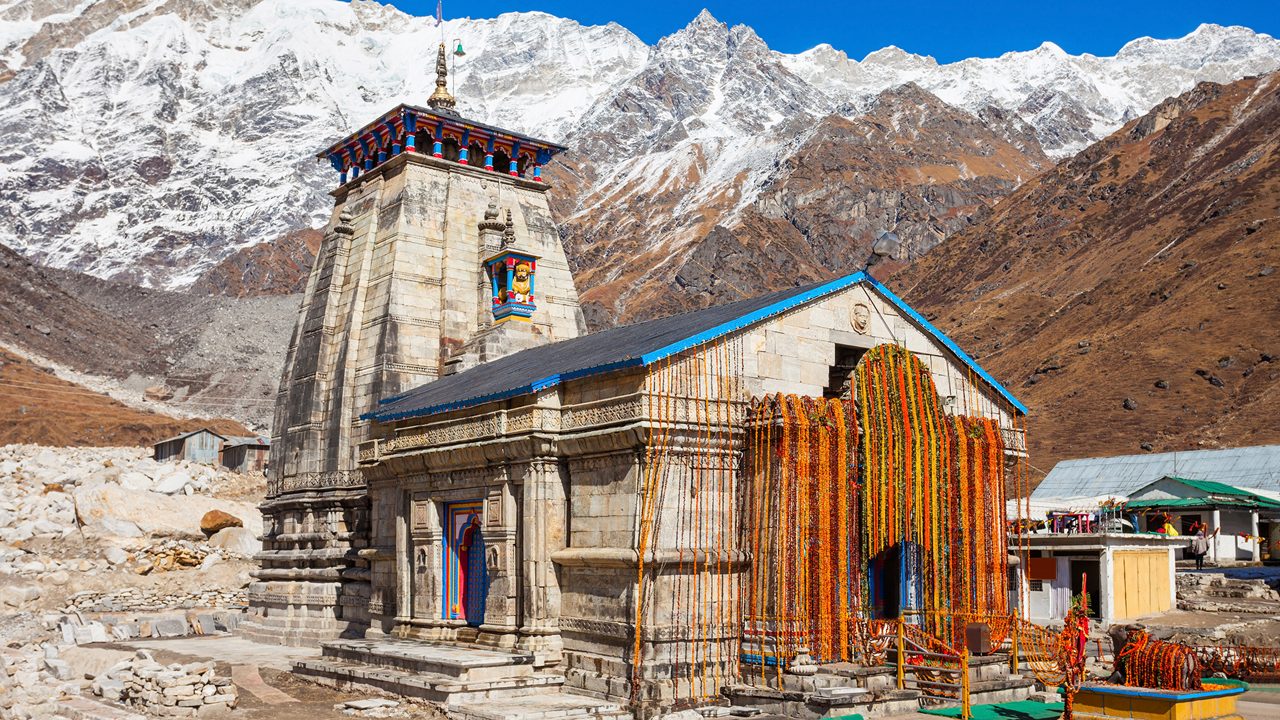The Char Dham Yatra in Uttarakhand is one of the most sacred and spiritually uplifting pilgrimages in India. Comprising four holy shrines Yamunotri, Gangotri, Kedarnath, and Badrinath—this yatra is not only a spiritual journey but also an exploration of the natural beauty of the Himalayas. Every year, lakhs of devotees and travelers undertake this journey, seeking blessings, peace, and a deeper connection with divinity.
While the yatra itself is a once-in-a-lifetime experience, choosing the best time to visit is crucial. The Himalayan climate is unpredictable, and the temples remain closed for almost six months due to heavy snowfall. To ensure a safe, comfortable, and spiritually enriching journey, you must plan your visit at the right time.
This guide will help you understand the ideal months, seasonal conditions, and travel tips for the Char Dham Yatra Uttarakhand.

Opening and Closing Dates of Char Dham Yatra
Before talking about the best time, it is important to know the official opening and closing dates of the Char Dham shrines.
- Opening of Char Dham Yatra – The yatra usually starts in late April or early May, depending on Akshaya Tritiya and temple rituals.
- Closing of Char Dham Yatra – The temples close after Diwali (October–November) when winter begins to cover the region with snow.
So, the yatra remains open for about six months (May to November), and pilgrims must plan within this window.
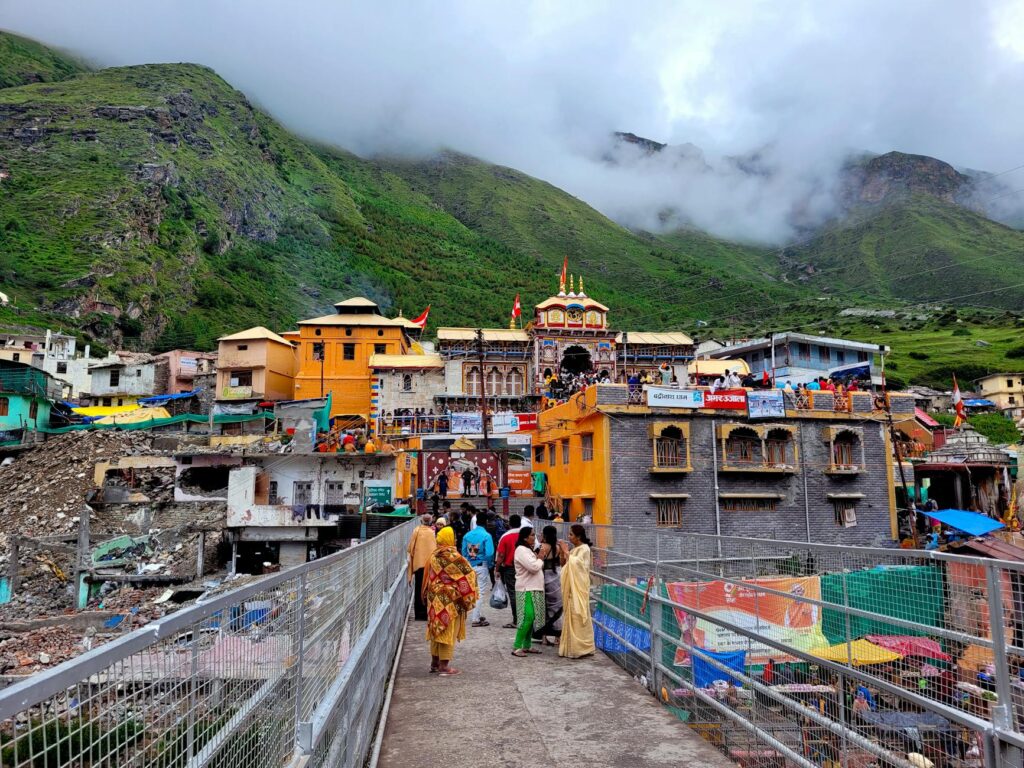
Why Timing Matters for Char Dham Yatra
The Char Dham temples are located in the high-altitude Garhwal Himalayas, with altitudes ranging between 3,000 and 3,600 meters. Weather plays a huge role in accessibility and safety.
- In early summer, the paths are clear, and the weather is pleasant.
- In monsoon months, landslides and heavy rains can make the journey risky.
- In autumn, skies are clearer, and the scenery is breathtaking.
Understanding these seasonal variations ensures you get the most out of your pilgrimage, both spiritually and practically.
Best Time to Visit Char Dham Yatra
The best time to visit Char Dham Yatra is May to June (summer) and September to mid-October (post-monsoon). These months provide the safest conditions, pleasant weather, and comfortable travel.
Let us break this down season-wise:
1. Char Dham Yatra in Summer (May to June)
- Temperature: 10°C to 20°C (mild and pleasant).
- Weather: Clear skies, cool breeze, snow begins to melt.
- Why Visit Now?
- Ideal for first-time pilgrims.
- Roads and trekking paths are safer.
- Rivers and waterfalls are in full flow, adding to the scenic beauty.
- Comfortable for elderly devotees as well.
Highlights of Summer Travel:
- Snow still lingers around Kedarnath and Badrinath, giving a magical view.
- Easy access to all shrines without heavy monsoon interruptions.
- Best time for large family groups and senior citizens.
Tips for Summer Travelers:
- Carry light woolens, as evenings are still cold.
- Expect a large crowd since it’s the peak pilgrimage season.
- Advance booking of hotels and transport is necessary.
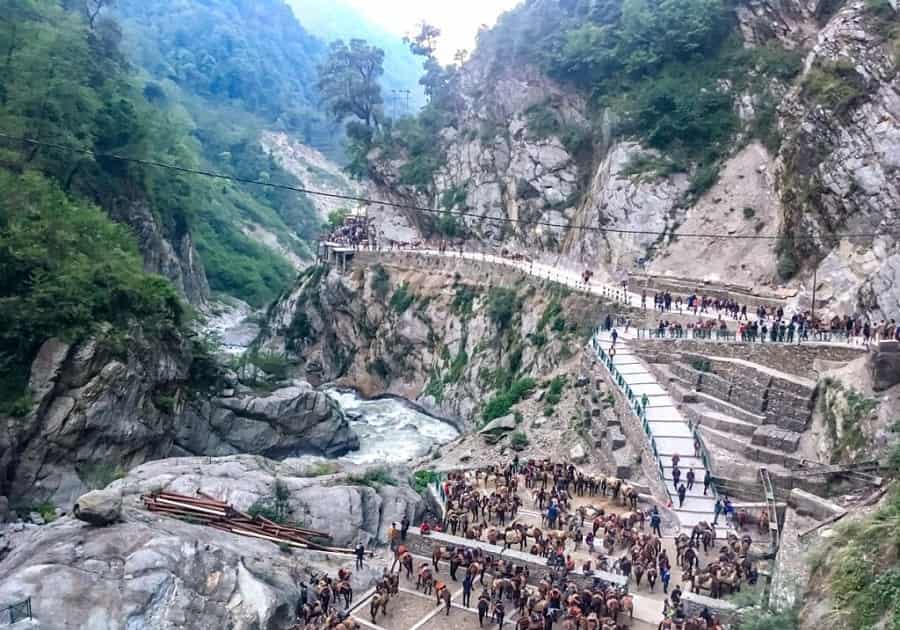
2. Char Dham Yatra in Monsoon (July to August)
- Temperature: 15°C to 25°C, but frequent rainfall.
- Weather: Heavy rain, foggy roads, high risk of landslides.
- Why Avoid This Season?
- Slippery trekking routes.
- Roadblocks and delays are common.
- Flash floods in some areas can be dangerous.
However, monsoon also paints the valleys green and fills rivers to the brim, making the scenery breathtaking. Experienced trekkers or those seeking adventure may still attempt the yatra, but it is generally not recommended for families and elderly people.
Safety Tips for Monsoon Travelers:
- Always check weather updates before starting each day’s journey.
- Keep buffer days in your schedule for delays.
- Carry rain gear and waterproof covers for electronics and documents.
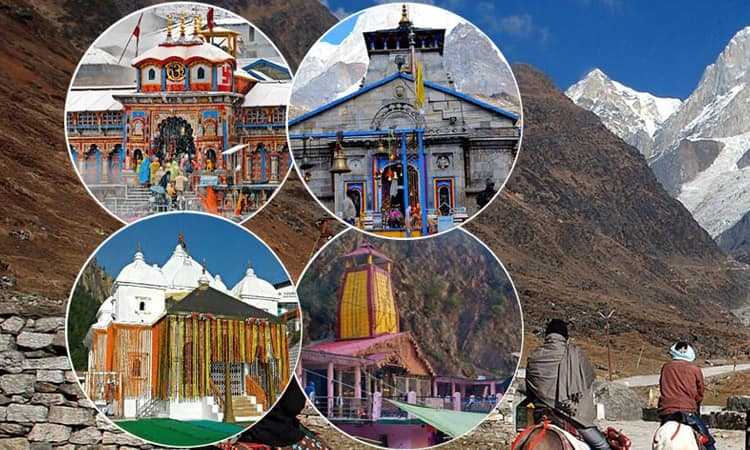
3. Char Dham Yatra in Autumn (September to Mid-October)
- Temperature: 5°C to 15°C (cooler, but manageable).
- Weather: Clear skies, crisp mountain air, less crowd.
- Why Visit Now?
- Post-monsoon freshness makes the valleys beautiful.
- Roads are clearer and safer compared to monsoon.
- The serene environment allows for a more peaceful darshan.
Highlights of Autumn Travel:
- Snow peaks of the Himalayas are visible in their full glory.
- Ideal for photography and nature lovers.
- Perfect for those who prefer less crowd and calmer surroundings.
Tips for Autumn Travelers:
- Carry warm woolens as nights can get very cold.
- Be prepared for shorter days and chilly winds.
- A good time for solo travelers or couples who want peace.
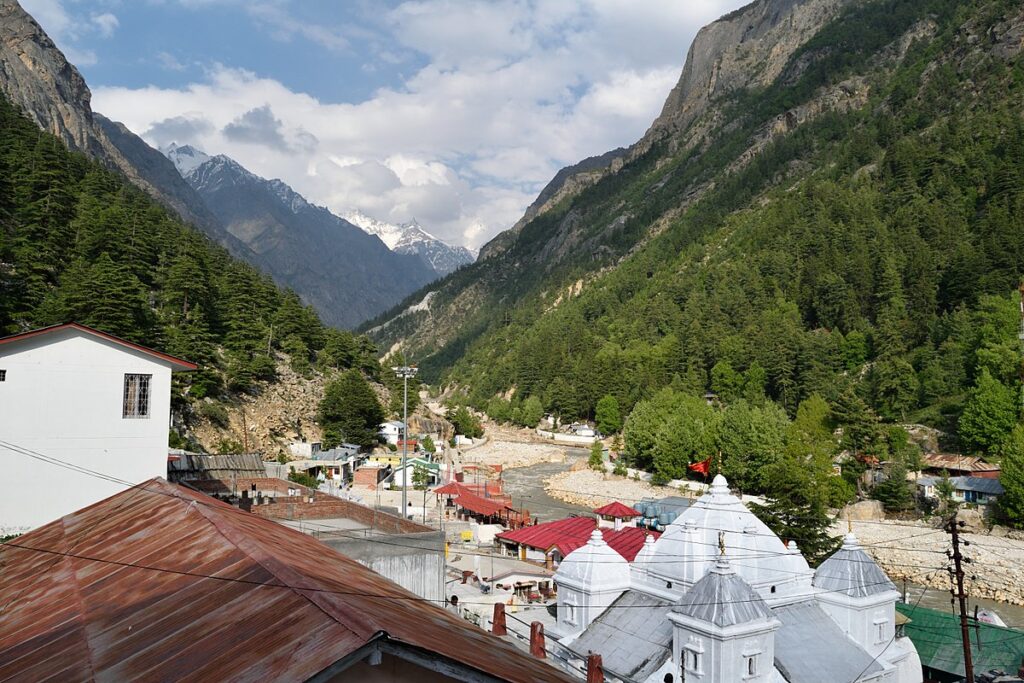
4. Char Dham Yatra in Winter (Late October to April)
- Temperature: Drops below freezing point.
- Weather: Heavy snowfall, temples closed.
- Why Not Possible?
- All four shrines are inaccessible due to snow.
- Only winter shrines of the deities are worshipped in lower towns like Ukhimath (for Kedarnath) and Joshimath (for Badrinath).
However, winter is ideal if you want to experience snow-clad Uttarakhand and visit the winter seats of the deities, but the main Char Dham Yatra remains closed.
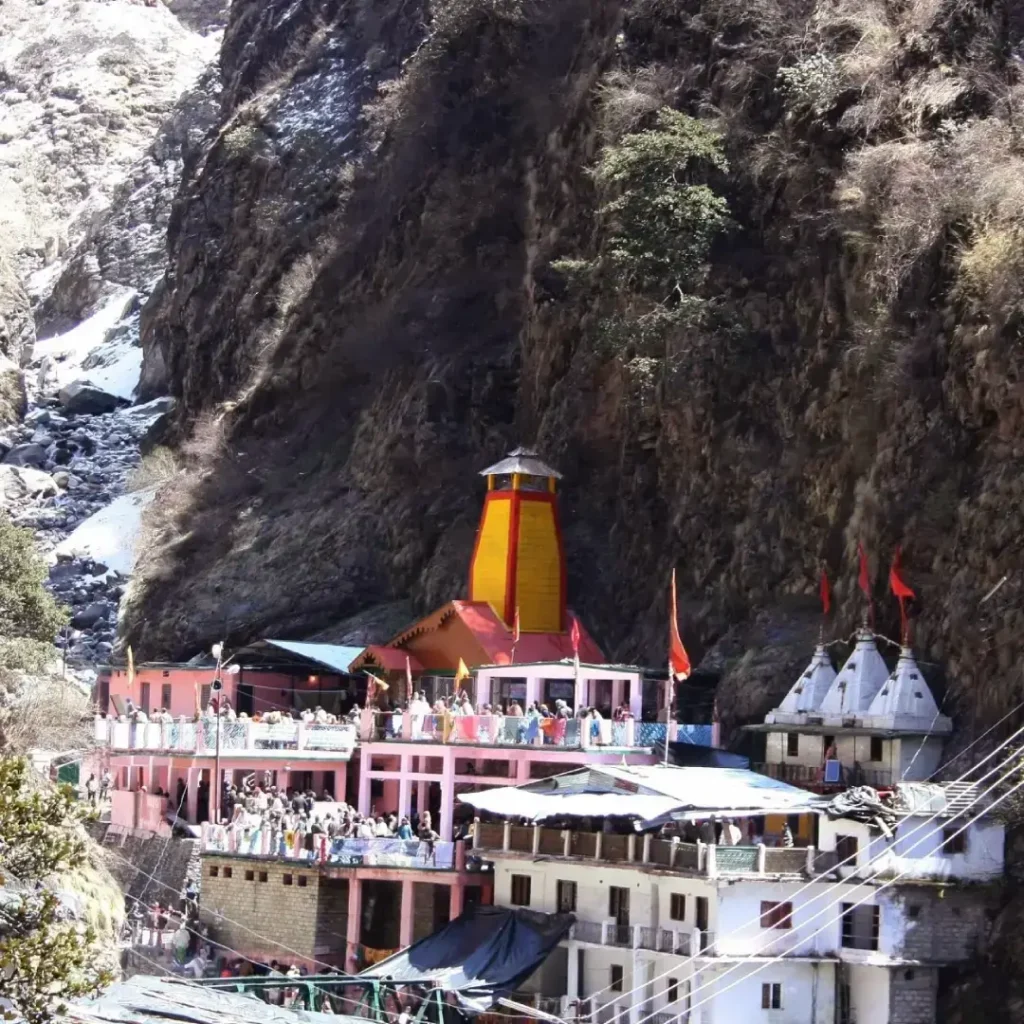
Month-by-Month Breakdown of Char Dham Yatra
Here’s a quick month-wise guide to help you plan better:
April (Late April – Season Opening)
The Char Dham temples usually open around Akshaya Tritiya in late April. This period marks the beginning of the pilgrimage season. The snow begins to melt, but the weather is still quite cold, especially in Kedarnath and Badrinath. Roads may not be fully clear in some stretches, but the excitement of the opening ceremony attracts many pilgrims.
- Weather: Cold, with daytime temperatures around 5°C to 10°C.
- Best For: Pilgrims who want to witness the first darshan of the season.
- Travel Tip: Carry heavy woolens and be prepared for chilly winds and possible road delays.
May
May is one of the most popular months for Char Dham Yatra. By now, most roads are clear, the weather is pleasant, and nature looks refreshing after months of snow. The crowds begin to increase, as families, groups, and elderly devotees prefer this time.
- Weather: Mild, 8°C to 18°C, comfortable for travel.
- Best For: Families, elderly pilgrims, and first-time travelers.
- Travel Tip: Book hotels and transport in advance because May is peak season.
June
June is the height of the summer pilgrimage season. The weather is ideal for trekking and road travel, but this is also when the Char Dham routes witness the largest number of pilgrims. Kedarnath and Badrinath still have traces of snow, making the views breathtaking.
- Weather: Pleasant, 10°C to 20°C, though days can be slightly warm.
- Best For: Large groups, spiritual seekers, photographers.
- Travel Tip: Expect long queues at temples; patience is key.
July
July marks the arrival of the monsoon in Uttarakhand. Rainfall becomes frequent, and the risk of landslides increases. Although the valleys look lush and green, travel can be unpredictable. Many pilgrims avoid this period, but some adventurous travelers still take the chance.
- Weather: 15°C to 22°C, rainy and humid.
- Best For: Adventure seekers who don’t mind challenges.
- Travel Tip: Carry raincoats, waterproof shoes, and keep buffer days in your itinerary.
August
August is similar to July, with heavy rainfall across Garhwal. The risk of roadblocks and landslides continues. The pilgrimage is possible, but not recommended for families, children, or senior citizens. Still, if the weather holds, the scenery is exceptionally beautiful with rivers in full flow.
- Weather: 15°C to 20°C, frequent rain.
- Best For: Experienced trekkers and pilgrims willing to take risks.
- Travel Tip: Stay updated with weather forecasts and keep emergency contacts handy.
September
September is considered one of the best times after summer. Monsoon showers retreat, the skies clear up, and the roads become safer again. The weather is crisp and fresh, with breathtaking views of the snow-clad peaks. The crowd is thinner compared to May–June, making it a peaceful experience.
- Weather: Cool, 8°C to 15°C, ideal for travel.
- Best For: Families, couples, and those seeking less crowded conditions.
- Travel Tip: Carry woolens as evenings can be chilly.
October (Early to Mid-October)
October is the final month of the Char Dham season. By mid-October, the weather becomes very cold, especially in Kedarnath and Badrinath, but the skies remain clear. The beauty of autumn in the Himalayas is unmatched, with golden valleys and sharp mountain views.
- Weather: Cold, 5°C to 12°C, with freezing nights.
- Best For: Devotees who prefer peaceful darshan before the temples close.
- Travel Tip: Be prepared for cold waves and shorter daylight hours.
November (Closing Month)
By early November, the temples close for winter, usually after Diwali. Heavy snowfall begins, and the deities are moved to their winter shrines in lower towns. Pilgrimage to the main shrines is not possible, but devotees can still visit the winter abodes for blessings.
- Weather: Freezing, sub-zero temperatures in high-altitude areas.
- Best For: Devotees wishing to attend closing ceremonies.
- Travel Tip: Plan for lower-altitude visits as high-altitude shrines close.
Best Time for Elderly Pilgrims
Senior citizens are a big part of Char Dham Yatra. For them, safety and comfort are priorities.
- Recommended Season: May to June, and September.
- Why? Roads are stable, weather is not extreme, medical facilities are more accessible.
- Travel Tips for Elderly:
- Avoid monsoon travel.
- Use helicopter services for Kedarnath to reduce trekking stress.
- Carry essential medicines and keep emergency contacts handy.
Travel Tips for the Best Char Dham Yatra Experience
- Book Early – Hotels, transport, and helicopter services get sold out quickly in peak season.
- Pack Smart – Carry woolens, raincoat, good trekking shoes, medicines, torch, and dry snacks.
- Stay Hydrated – High altitude may cause dehydration; drink plenty of water.
- Acclimatize Properly – Spend a day or two at mid-altitude places like Rishikesh or Uttarkashi before heading higher.
- Respect the Culture – Dress modestly, follow temple rules, and avoid littering.
- Check Weather Daily – Always stay updated with local forecasts to avoid delays.
- Hire Local Guides – They provide better navigation and cultural insights.
Final Thoughts
The best time to visit Char Dham Yatra in Uttarakhand is during May–June and September–mid-October. These months offer the safest travel conditions, pleasant weather, and the most enriching experience for both spiritual seekers and nature lovers.
Whether you are traveling with family, going on a solo pilgrimage, or guiding elderly parents, timing your journey well ensures you return with divine blessings and unforgettable memories.
The Char Dham Yatra is not just about reaching the shrines—it is about embracing the Himalayan spirit, respecting nature, and feeling a deep spiritual connection. Plan wisely, choose the right season, and your yatra will truly be a life-changing journey.
FAQs (10 with answers)
What is the best time to visit Char Dham Yatra in Uttarakhand?
The best time is May–June and September–October, when the weather is pleasant and safe for travel.
When does the Char Dham Yatra open and close each year?
The Yatra usually opens in April/May and closes by October/November, depending on the temple opening dates.
Is May a good time for Char Dham Yatra?
Yes, May is one of the most popular months with clear weather, but it is also crowded. Advance booking is recommended.
Can I do Char Dham Yatra in June?
Yes, June is good, but monsoon may start towards the end of the month, so early June is safer.
Is Char Dham Yatra safe during monsoon (July–August)?
No, monsoon brings landslides and heavy rainfall, making travel risky. It is better to avoid July and August.
What are the advantages of traveling in September?
September offers pleasant weather, fewer crowds, and clear views after the monsoon, making it ideal for pilgrims.
Can senior citizens travel safely during Char Dham Yatra?
Yes, but the safest months for them are May–June and September–October, when weather is stable.
Is October a good month for Char Dham Yatra?
October is good, with cool weather and fewer tourists, but temperatures can drop significantly in high-altitude areas.
Which is the coldest month in Char Dham Yatra?
October and November are the coldest, with snowfall beginning in higher regions.
How should I choose the best month for my Char Dham trip?
Choose based on your preference: May–June for lively crowds and festivals, September–October for peaceful, less crowded travel.

